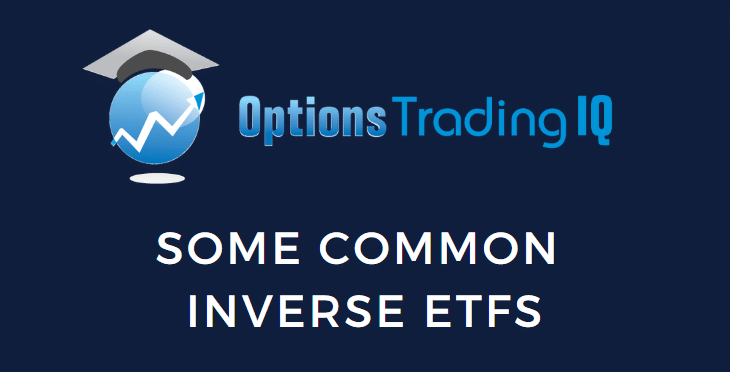
ETFs are Alternate-Traded Funds.
There are ETFs of all specialties.
At present, we’re reviewing some ETFs within the “inverse ETF.”
These are funds that go up when an underlying asset goes down.
And so they go down when an underlying asset goes up.
Contents
Beginning with the inverse ETF with the image “SH,” which is the ProShares Quick S&P500 fund. This fund goals to offer the inverse of the every day efficiency of the S&P 500 Index (with the image SPX).
For instance, from the shut of July 1st, 2024, to the shut of July 2nd, 2024, the SPX went up 33.92 factors, or 0.62%, from 5475.10 to 5509.02.
Throughout that very same time, SH went down from 11.39 to 11.32, or 0.62% – the identical share quantity however in the wrong way.
Why would somebody purchase a fund that goes down?
They wouldn’t in the event that they knew that SPX would go up.
They might put money into the fund after they thought SPX would go down, as within the case of a hypothetical investor who had bought 168 shares of SH on the shut of April 1st, 2024, and bought it on the shut of April nineteenth, 2024.
Throughout that point, SH went up $0.71 from $11.88 to $12.59, or up 6%.
The investor earnings $119 from these 168 shares, representing $2000 value of capital invested.
An SPY investor throughout that very same interval would have misplaced cash.
SPY is the ETF that tracks the S&P 500. It isn’t an inverse ETF.
SPY goes up when the S&P 500 goes up, and vice versa.
Nevertheless, since buyers can’t purchase shares of SPX, they purchase shares of the SPY exchange-traded fund, which is about one-tenth the scale of SPX.
Throughout that very same interval, SPY dropped $27 from $522.16 to $495.16.
With 4 shares (or about $2000) invested, the SPY investor misplaced $108.
In idea, the lack of the SPY investor could be the identical because the achieve of the SH investor.
Because the widespread saying goes:
“In idea, there isn’t a distinction between idea and follow, whereas in follow, there’s.”
The writer of the unique quote is commonly misattributed and largely unknown.
Nevertheless, quoteinvestigator.com offers credit score to a Yale College scholar named Benjamin Brewster.
In follow, the SPY investor and SH couldn’t have invested precisely the identical quantity of capital because of the lack of ability to purchase fractional shares.
That, along with calculation rounding, would account for the distinction.
The SH is an unleveraged inverse ETF. The SPXU is a three-times leveraged inverse ETF of the SPX.
This image is simple to recollect as a result of you may consider the “U” in “SPXU” as “upside-down.”
The chart of SPXU seems like an upside-down picture of SPX.
An investor of SPXU throughout that very same time would have profited 15% as a result of SPXU went up 5.78 from 32.55 to 38.33.
It makes about 3 times the revenue and takes 3 times the loss because the unleveraged product (such because the SH).
There’s additionally the two-time leveraged inverse ETF of the S&P 500.
Its image is SDS, a moderately tough one to recollect.
Better of Choices Buying and selling IQ
Apart from the S&P 500, there are inverse ETFs for common underlying such because the Nasdaq, Dow, and Russell 2000.
SH – one-time inverse ETF of the S&P 500SDS – two-times inverse ETF of the S&P 500SPXU – three-times inverse ETF of the S&P 500PSQ – one-time inverse ETF of the Nasdaq-100QID – two-time inverse ETF of the Nasdaq-100SQQQ – three-time inverse ETF of the Nasdaq-100DOG – one-time inverse ETF of the Dow Jones Industrial AverageDXD – two-time inverse ETF of the Dow Jones Industrial AverageSDOW – three-time inverse ETF of the Dow Jones Industrial AverageRWM – one-time inverse ETF of the Russell 2000 IndexTWM – two-time inverse ETF of the Russell 2000 IndexSRTY – three-time inverse ETF of the Russell 2000 Index
We hope you loved this text on the most typical inverse ETFs.
In case you have any questions, please ship an e mail or go away a remark under.
Commerce protected!
Disclaimer: The knowledge above is for instructional functions solely and shouldn’t be handled as funding recommendation. The technique offered wouldn’t be appropriate for buyers who will not be conversant in alternate traded choices. Any readers on this technique ought to do their very own analysis and search recommendation from a licensed monetary adviser.
